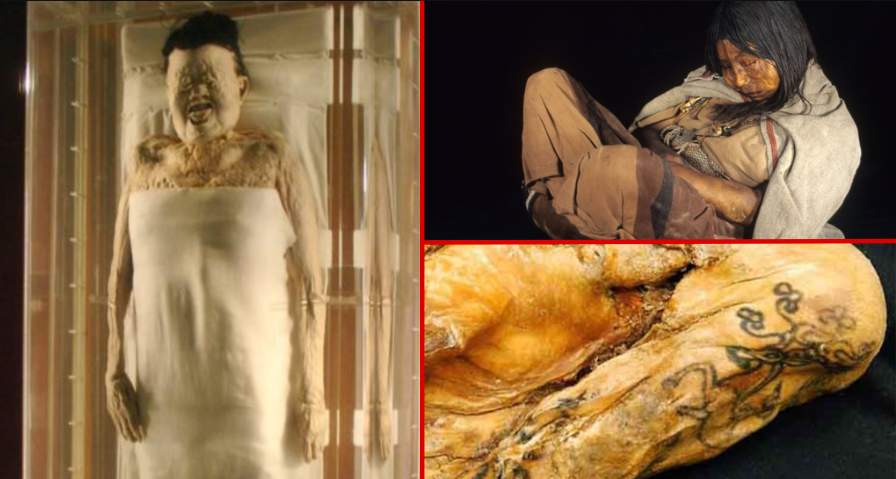
Uncovering the World’s Most Famous Beauty Mummies: The Enchantress and the Cursed Queen.
Rosalia Lombardo, the Child Mummy
Deep in the Catacombs of the Capuchin Monks in Sicily, inside a tiny glass casket, lies the body of little Rosalia Lombardo. When she died in 1918 of pneumonia, her father General Lombardo was devastated. He sought the services of Italian embalmer Alfredo Salafia to preserve her.
Using a mixture of chemicals (including formalin, zinc salts, alcohol, salicylic acid and glycerin), the end result was nothing short of extraordinary. The body was so well-preserved, she became known as “Sleeping Beauty.”
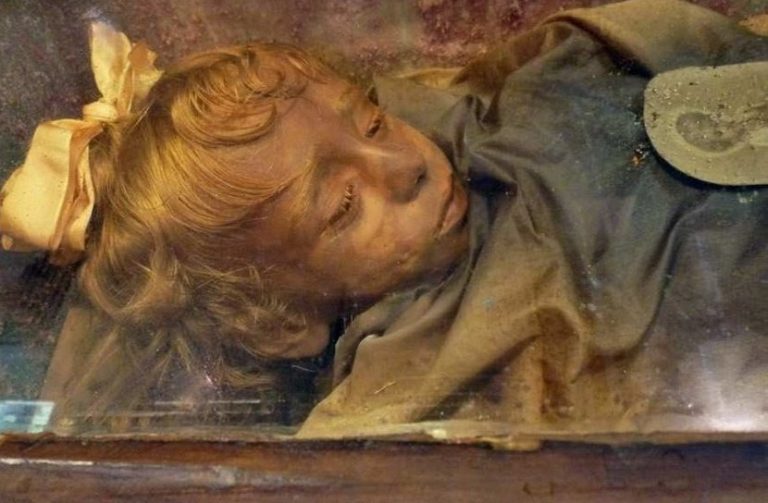
For over 80 years, she has remained perfectly preserved. Only in the last five years have signs of decay appeared. In response, the glass casket was moved to a drier end of the Catacombs and placed inside an airtight, nitrogen-filled glass case.
Changes in temperature within the catacombs have resulted in a unsettling phenomenon with Rosalia’s tiny body. As the temperature fluctuates, the mummy’s eyelids will partially open, revealing her intact eyes underneath.
To date, she receives more visitors than any other individual in the catacombs.
La Doncella, a Frozen Incan Sacrifice
Over 500 years ago, 15-year-old La Doncella and two other children were left to freeze to death in a ritual sacrifice. Sitting cross-legged high atop Mount Llullaillaco, she was drugged with chicha and coca leaves to induce a heavy sleep and left to die as an offering to the Sun God.
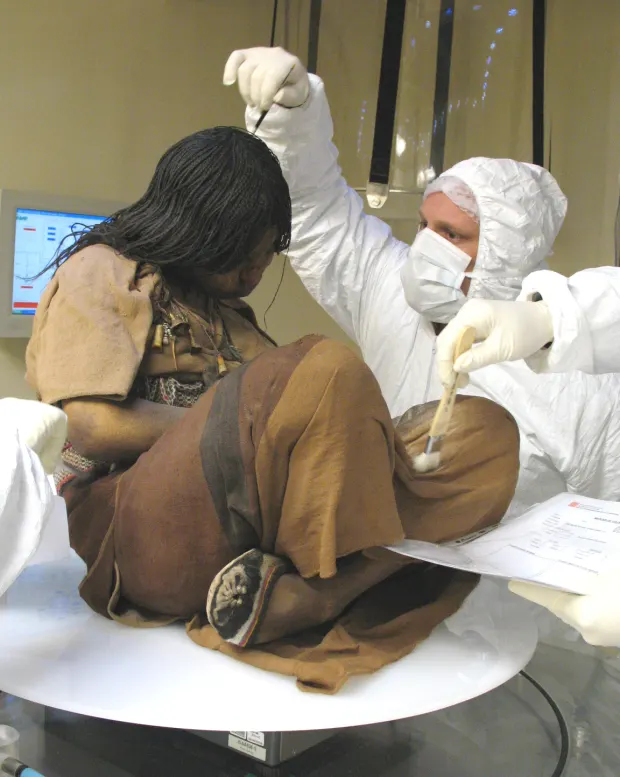
In 1999, archaeologists discovered the remains of La Doncella and the two other children, the latest of several unbelievable sacrificial finds in the Andes Mountains. The eldest of the three children, La Doncella, was a “Sun Virgin,” a child chosen at an early age to be raised as a sacrifice for the Sun God. She lived a royal life until the day of sacrifice.

Her elaborately braided hair simply astonished her discoverers. Scientists even found a few grey hairs, suggesting that her knowledge of her ultimate fate took a deep emotional toll.
The Wet Mummy Discovered During Road Construction in China
Imagine an average construction worker, digging a foundation for a new road with a backhoe, suddenly uncovers a national treasure. That’s exactly what happened in China in March of 2012. Submerged for 600 years in a waterlogged coffin, a remarkably preserved Ming Dynasty mummy was discovered in the center of a modern metropolis during a construction project!
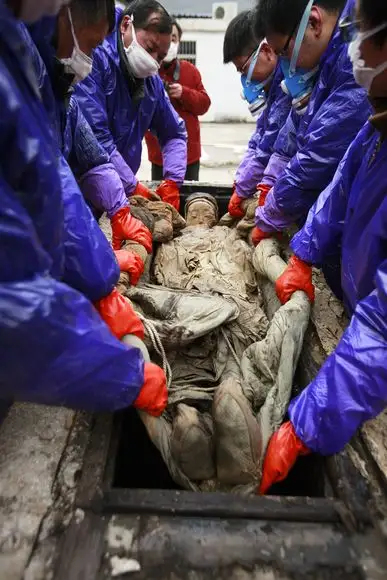
The five-foot-tall woman was fully clothed and buried with many fine pieces of jewelry, including a silver hairpin that still held her hair in place and a huge jade ring on her finger. Atop her wooden coffin was a simple silver medallion known as an Exorcism Coin placed there to protect the body from evil spirits.
The mummy has been transported to Taizhou Museum for study.

Lady Dai Xin Zhui, the Best-Preserved Mummy Ever
Lady Dai Xin Zhui is undisputedly the best preserved mummy ever found: not in terms of physical appearance, but in the simple completeness of her body. Unlike Lenin, her internal organs are perfectly intact, including her brain. Unlike Evita, her tissues are still soft to the touch, her limbs flexible. Her hair is complete and there is type-A blood in her veins!
Here is the most astonishing part: She is 2,100 years old! Meet Xin Zhui, aka Lady Dai, the Diva Mummy.
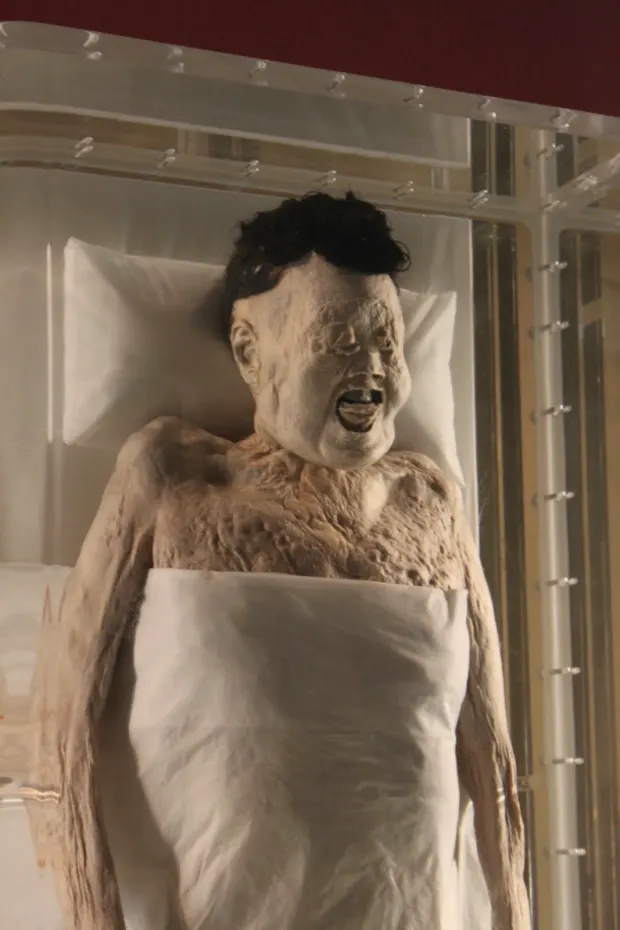
The wife of the ruler of the Han Imperial Flefdom of Dai, she died between 178 and 145 BC at age 50. She was buried in a titanic-sized tomb with exotic foods, dinnerware, and fabrics. The body itself was immersed in a mysterious liquid, no doubt responsible for the amazing preservation.
The state of the preservation has given archaeologists the single most complete medical profile ever compiled of an ancient human being. The pristine condition of the body allowed for a modern-day autopsy, which revealed many clues about her life.
She was overweight, suffered from lower back pain, had clogged arteries, and had a severely damaged heart. She is the oldest diagnosed case of heart disease. Until her discovery, medical experts had argued that heart disease only existed in modern times.




